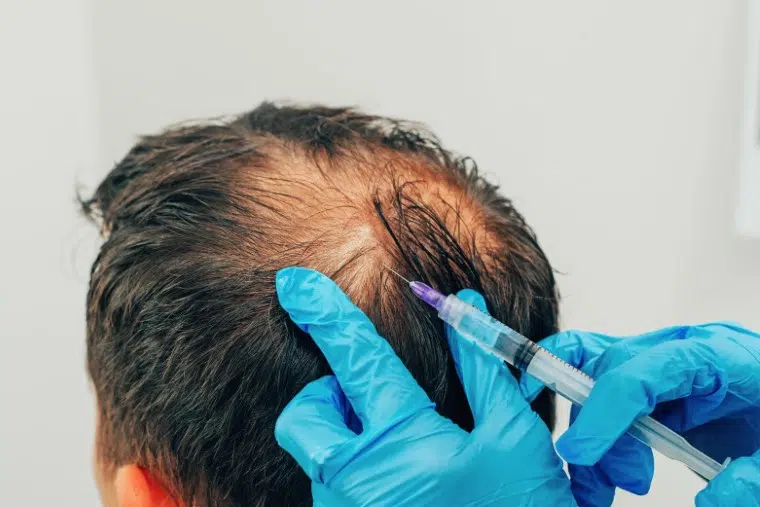Hair transplantation has undergone a remarkable evolution over the past several decades. From the rudimentary hair plugs of the past to today’s refined Follicular Unit Extraction (FUE) and Follicular Unit Transplantation (FUT) methods, advancements in technology have revolutionized hair restoration. This article explores the history, development, and modern techniques of hair transplantation to help you understand how far this field has come.
The Early Days: Hair Plugs and Punch Grafts
The 1950s: The Birth of Hair Transplants
The modern era of hair transplantation began in the 1950s when Dr. Norman Orentreich, a New York dermatologist, introduced the concept of “donor dominance.” He discovered that hair taken from the back and sides of the scalp retained its characteristics even when transplanted to balding areas. This discovery led to the development of punch graft techniques.
Hair Plugs: The First Generation of Transplants
In the 1960s and 1970s, hair transplants were performed using large, round grafts known as “hair plugs.” These plugs, typically 4mm in diameter, contained multiple hair follicles and were transplanted into the balding scalp. While effective in covering bald spots, these procedures often resulted in an unnatural “doll’s hair” appearance due to the large gaps between plugs.
The Shift to Mini and Micro Grafts
The 1980s: Refining Hair Restoration
As the demand for more natural-looking results increased, surgeons began using smaller grafts. Mini grafts (4-12 hairs) and micro grafts (1-3 hairs) replaced the outdated plug method. This refinement led to more aesthetically pleasing outcomes by mimicking the natural hair growth pattern.
The Introduction of FUT: A Major Breakthrough
The 1990s: Follicular Unit Transplantation (FUT) Emerges
The 1990s marked a significant turning point with the introduction of Follicular Unit Transplantation (FUT). This technique involved removing a strip of scalp from the donor area, dissecting it into individual follicular units, and transplanting them into the recipient area. FUT allowed for a more natural-looking hairline and denser coverage.
Advantages of FUT: ✔️ Ability to transplant a large number of grafts in a single session.
✔️ Higher follicle survival rate.
✔️ More cost-effective compared to newer techniques.
Disadvantages of FUT: ❌ Leaves a linear scar on the donor area.
❌ Requires stitches, leading to a longer recovery time.
❌ Can cause more post-procedure discomfort.
The Rise of FUE: The Minimally Invasive Revolution
2000s to Present: The Rise of Follicular Unit Extraction (FUE)
Follicular Unit Extraction (FUE) was introduced in the early 2000s as an alternative to FUT. Instead of removing a strip of scalp, FUE involves extracting individual hair follicles using a small punch tool. This technique minimizes scarring and offers faster recovery times.
Advantages of FUE: ✔️ No linear scarring, making it ideal for those who prefer short hairstyles.
✔️ Faster healing and less post-operative discomfort.
✔️ Suitable for patients with limited donor hair or those requiring a smaller transplant session.
Disadvantages of FUE: ❌ More time-consuming and expensive.
❌ May require multiple sessions for extensive hair loss.
❌ Slightly lower graft survival rate compared to FUT.
Robotic and Advanced Hair Transplant Techniques
The 2010s and Beyond: The Future of Hair Transplants
Technological advancements have led to robotic-assisted FUE, laser hair therapy, and platelet-rich plasma (PRP) treatments to enhance transplant results. These innovations have improved precision, increased follicle survival rates, and reduced recovery time.
Which Hair Transplant Method is Best for You?
Choosing between FUT and FUE depends on several factors, including:
Extent of Hair Loss: FUT is better for extensive baldness, while FUE is ideal for smaller areas.
Lifestyle Preferences: If you wear short hairstyles, FUE’s minimal scarring is a better choice.
Budget: FUT is generally more cost-effective, while FUE offers a minimally invasive approach at a higher price.
Conclusion
Hair transplantation has come a long way from the crude plug methods of the past to the highly sophisticated techniques of today. Whether you opt for FUT or FUE, modern hair restoration methods offer natural-looking results with improved comfort and precision. Consulting with a qualified hair transplant specialist is the best way to determine which method suits your needs and goals. The future of hair restoration continues to evolve, promising even better outcomes for individuals struggling with hair loss.

